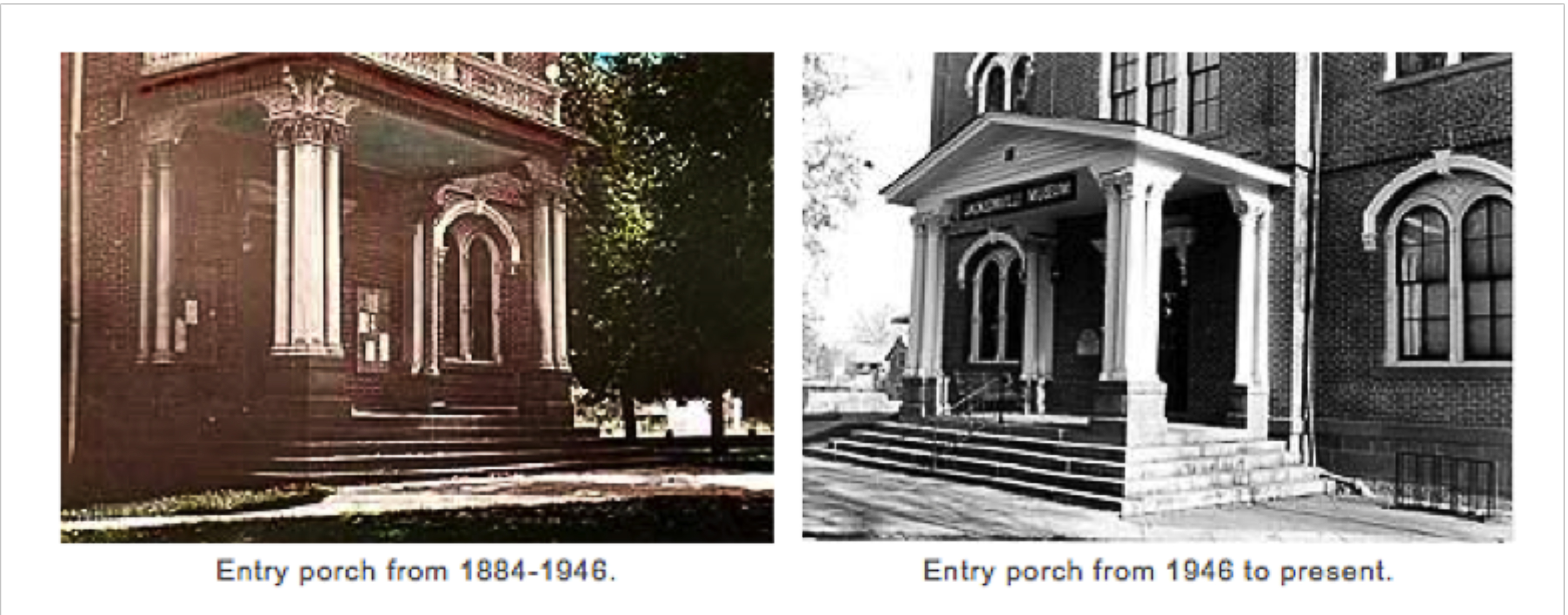|
|
Virtual Walk Through History Jacksonville began in the 1850s as a gold boom town, full of miners, settlers, merchants, and women of ill-repute all seeking a quick fortune. It quickly grew into the largest town in Southern Oregon, and the hub of regional commerce, society, and government for half a century. In fact, the block on Fifth Street, between C and D Streets, has been the site of County, and now City government from at least 1859. The imposing two-story brick and stone Italianate courthouse that is now Jacksonville’s new City Hall was formerly Jackson County’s historic courthouse. It was declared the crowning glory of Jacksonville when it was constructed in 1883-84. But it was not the first county courthouse constructed in Jacksonville. No, that “honor” goes to a clapboard two story building dedicated on March 6, 1859, by the Freemasons as a masonic hall. The Masons leased the first floor to the county for use as a courthouse.1 As time passed, of course, the original courthouse became run-down and it was time for a new building.
One might believe the citizens of Jackson County would be pleased at the notion of such a lovely, distinguished new courthouse given that the old clapboard courthouse was referred to as a “dilapidated old shanty,”2 One citizen even proposed it be rented out as a wagon shed.3 But if they were excited, they kept their enthusiasm in check. As early as July 8, 1881, a war of words broke out between William Leeds, the editor/publisher of The Ashland Tidings, and Frank Krause of Jacksonville’s Oregon Sentinel. The Tidings may have fired the first salvo that day, essentially accusing the Sentinel, and Jacksonville’s other newspaper, The Democratic Times, of remaining silent on the issue of building a new courthouse. Krause shot back that of course the Sentinel was in favor “consistent with the public interest” and “within the means of the county.” Mr. Leeds apparently opposed the expense of a new courthouse, pleading “poverty” on behalf of Jackson County.4 It’s possible, however, that he resented Jacksonville continuing as the county seat since Leeds termed the issue Jacksonville’s “court house grab.”5 Mr. Krause in turn dismissed Mr. Leeds’ continued objections as “court house colic.”6 By the time the Jackson County Commission voted in favor of building the new courthouse in Jacksonville, the discourse between the two editors/publishers had degenerated further. William Leeds had become “Brother Leeds” in The Sentinel, with the paper accusing him of disliking logic and declaring “we will let logic take care of itself while the people draw their own conclusions.” Another Sentinel editorial salvo opined “if the county seat were located at Ashland the county Court would be abused like pick-pockets if they did not take immediate action and provide suitable buildings.”7 Mr. Krause’s ire was not reserved for The Ashland Tidings; he kept some contempt in reserve for the other Jacksonville paper, The Democratic Times, decrying its failure to weigh in strongly in favor of the courthouse. When it did so, Krause accused it of removing that endorsement from the editions of its paper that were distributed to areas in Jackson County outside of Jacksonville where opposition to the construction of the courthouse continued.8 Krause opined “[W]e now openly charge the Democratic ‘Times’…with attempting in its issue of Sept. 8 to mislead and deceive its readers with reference to its attitude on the court house question…. The whole course of the ‘Times’ on this court house matter has been hesitating, weak-kneed, vacillating and cowardly.”9 Fake news, indeed. Despite Brother Leeds’ protestations, the cornerstone for Jacksonville’s new courthouse was set in June of 1883. The Sentinel reported that day was declared a city holiday, and he was quick to note that “the attendance from Ashland was quite large.”10 (Take THAT, Brother Leeds.) Judge Silas Day remarked during the festivities that the courthouse was to be constructed as far as possible with Jackson county materials and by Oregon labor. Notable locals present included Kate Hoffman, Maggie Linn, Florence Shipley, William Hoffman, The Honorable P. P. Prim, Thomas Reames and Nathaniel Langell. Some of the items placed inside the cornerstone were a Confederate twenty-dollar bill and other foreign monies, a roll of the members of the Southern Oregon Pioneer Society, and an issue of the Table Rock Sentinel dated October 8, 1855.11 The old wooden courthouse building was sold to Gustav Karewski for $116.0012 – we don’t know whether he in fact used it as a wagon shed. The courthouse was completed in 1884 at a cost of approximately $32,000.00.13 In 1946, the front porch was altered from the original 1884 construction. “Functional and decorative elements of the original porch — balusters, corner posts, terminal orbs, and flat roof — were all replaced with an unadorned shallow-pitched gable roof.”14 The historic Courthouse housed the Southern Oregon Historical Society until 2010 when it reverted to Jackson County. The County transferred ownership to the City of Jacksonville in 2012, and in 2019 it became the new home of Jacksonville’s City Hall.
Another noteworthy event in 1883? The Oregon and California Railroad bypassed Jacksonville in favor of the flat valley floor and Medford. As Jacksonville waned and Medford grew, many attempts were undertaken to relocate the county seat to the new business and residential hub. In 1927, Medford succeeded and the County seat was moved; but not before Jacksonville had one last glory moment, when the trial of the DeAutremont brothers attracted nationwide attention. Check back next week for our continued Virtual Walk Through History!
1 “Jackson County Courthouse #1.” Historic Jacksonville, 02/23/2016, https://www.historicjacksonville.org/jackson-county-courthouse/ |

